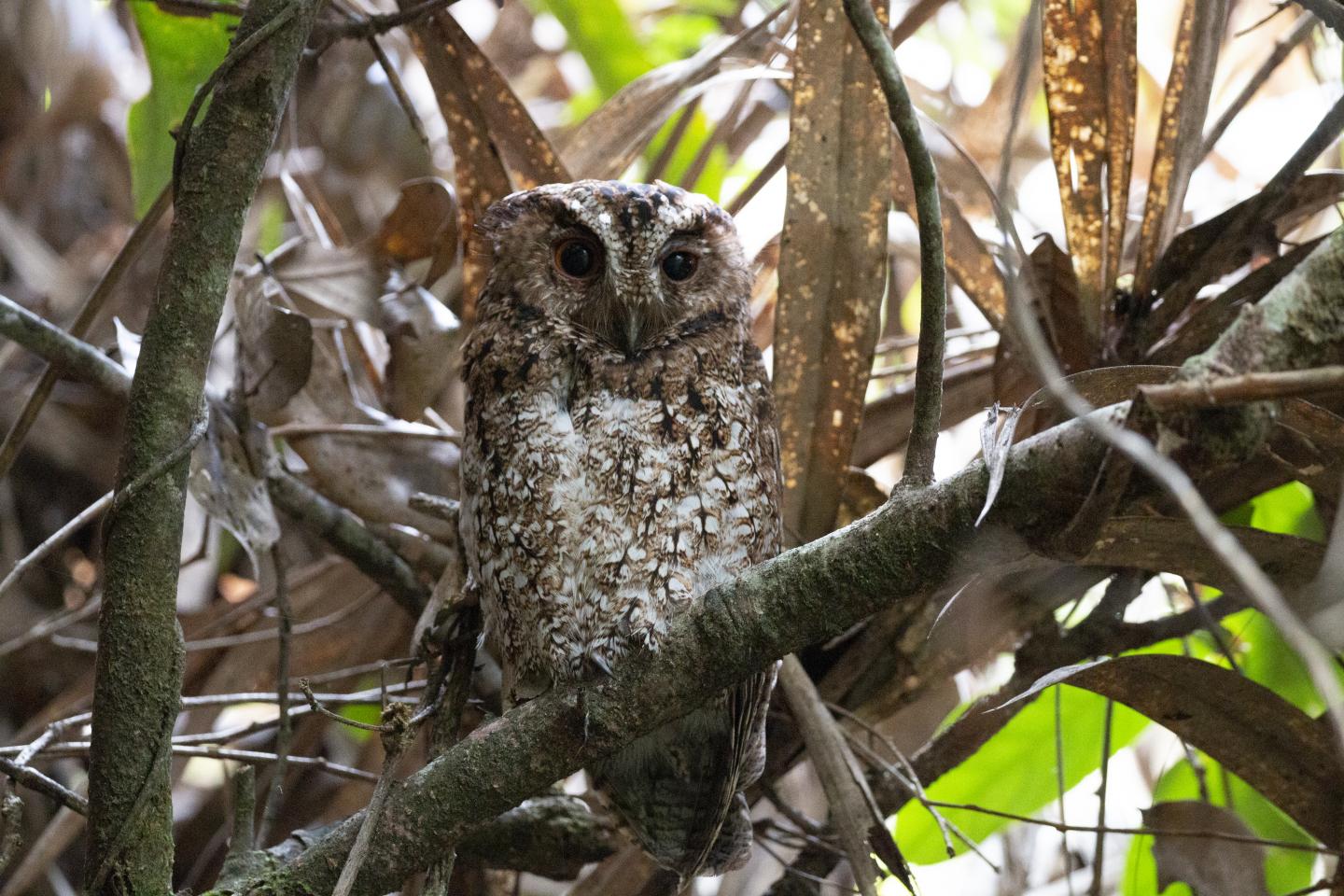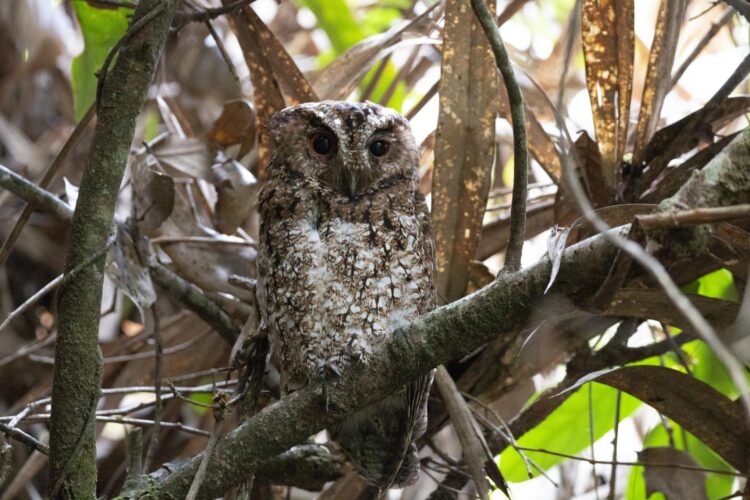First-ever photographs of what may be a distinct species

Credit: Andy Boyce
The Bornean subspecies of Rajah scops owl (Otus brookii brookii), documented in the wild for the first time since 1892, may be its own unique species and deserving of a conservation designation. Published April 28 in The Wilson Journal of Ornithology, Smithsonian Migratory Bird Center ecologist Andy Boyce reported the rediscovery and photographed this elusive subspecies in the mountainous forests of Mount Kinabalu in Sabah, Malaysia.
“It was a pretty rapid progression of emotions when I first saw the owl–absolute shock and excitement that we’d found this mythical bird, then pure anxiety that I had to document it as fast as I could,” Boyce said. “Based on size, eye color and habitat, I knew it was the Bornean Rajah scops owl. What’s more, taking into account this bird’s specific plumage characters, known speciation patterns within the Otus genus and phylogeographic patterns of montane birds in Borneo and Sumatra, O. b. brookii is likely its own unique species and further study is needed.”
Scops owls weigh approximately 100 grams (about 4 ounces), equivalent to four AA batteries. Both subspecies of Rajah scops owl are native to southeast Asia–Otus brookii brookii on the island of Borneo and Otus brookii solokensis on Sumatra. Small owls in the genus Otus often show rapid divergence following isolation in this region. In fact, the Indonesian archipelago is composed of islands that facilitate species divergence, and Borneo and Sumatra have been particularly prone to speciation events.
The serendipitous discovery occurred in May 2016 as part of a 10-year study of avian life-history evolution at Mount Kinabalu in seven study plots at elevations from 1,500-1,900 meters (about 5,000-6,200 feet). The project was led by T.E. Martin, assistant unit leader and research wildlife biologist with the Montana Cooperative Wildlife Research Unit at the University of Montana. While nest-searching in May 2016, technician Keegan Tranquillo notified Boyce, then a doctoral student at the University of Montana, after spotting a roosting scops owl larger and with different plumage than the regularly encountered Mountain scops owl (O. spilocephalus luciae).
“Unfortunately, we are only good at conserving what we know and what we name,” Boyce said. “If this rare bird is endemic only to Borneo and is its own species, conservation action is more likely. Our sole sighting during this intensive study confirms this owl lives in mature montane forests, likely above or below the survey area. Those elevations are already threatened by habitat loss due to climate change, deforestation and palm oil development. To protect this bird, we need a firm understanding of its habitat and ecology.”
Almost all data on this species is of the Sumatran subspecies. O. b. brookii‘s vocalizations, distribution, breeding biology and population size are totally unknown. Despite the lack of information on the species and subspecies, and the apparent rarity of the Bornean taxa, the Rajah scops owl was designated a species of least concern by the International Union for Conservation of Nature.
Properly resolving the ecology, distribution and taxonomic standing of O. b. brookii could have important conservation implications toward both subspecies of owls given each would be an island-endemic species. Researchers recommend nocturnal surveys in specific elevations to study habitat, record vocalizations and collect blood or feather samples to resolve the taxonomic relationship between O. brookii subspecies.
###
About the Smithsonian Migratory Bird Center
The Smithsonian Migratory Bird Center (SMBC) is dedicated to understanding, conserving and championing the grand phenomenon of bird migration. Founded in 1991, and part of the Smithsonian Conservation Biology Institute (SCBI), SMBC scientists work to conserve migratory species through research and public education that foster a better understanding of migratory birds and the need to protect diverse habitats across the Western Hemisphere. SCBI plays a leading role in the Smithsonian’s global efforts to save wildlife species from extinction and train future generations of conservationists, spearhead research programs at its headquarters in Front Royal, Virginia, the Smithsonian’s National Zoo in Washington, D.C., and at field research stations and training sites worldwide.
Media Contact
Annalisa Meyer
[email protected]
Original Source
https:/
Related Journal Article
http://dx.





